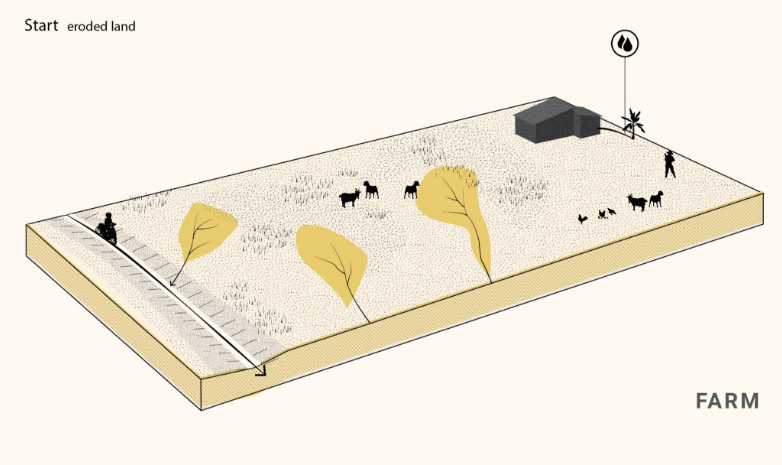Africa Wood Grow has a bottom-up approach by involving the local community in every step we take. The local community is the driver of the process of restoring the degraded landscape. Local farmers choose to plant trees collectively on their own land. There are various indigenous tree species planted, such as Melia Volkensii, a native tree species to the East Kenyan region. By planting different trees that attract different animals the biodiversity of the region increases is taken into account. Additionally, indigenous vegetation stimulates the sustainability and productivity of agroforestry practices.
The trees are of the essence to increase the well-being of the community and the surrounding nature. They will hold any available water retained in their roots before slowly releasing the water into the Tiva River. Additionally, the canopy cover will protect the soil from direct precipitation. As a result, the restored soil can allow the water to reach deeper into the ground and further enhance the soil quality. In turn, the trees have prevented the washing away of fertile soil. Moreover, the fallen leaves of the trees mixed with the soil and some animal compost will enrich the soil significantly. Overall, the trees will lead to higher agricultural output in the long run, and thus food security. Therefore, all three entities together with the local community aim to widely implementing this method to reduce soil degradation and improve livelihoods, here is how:
